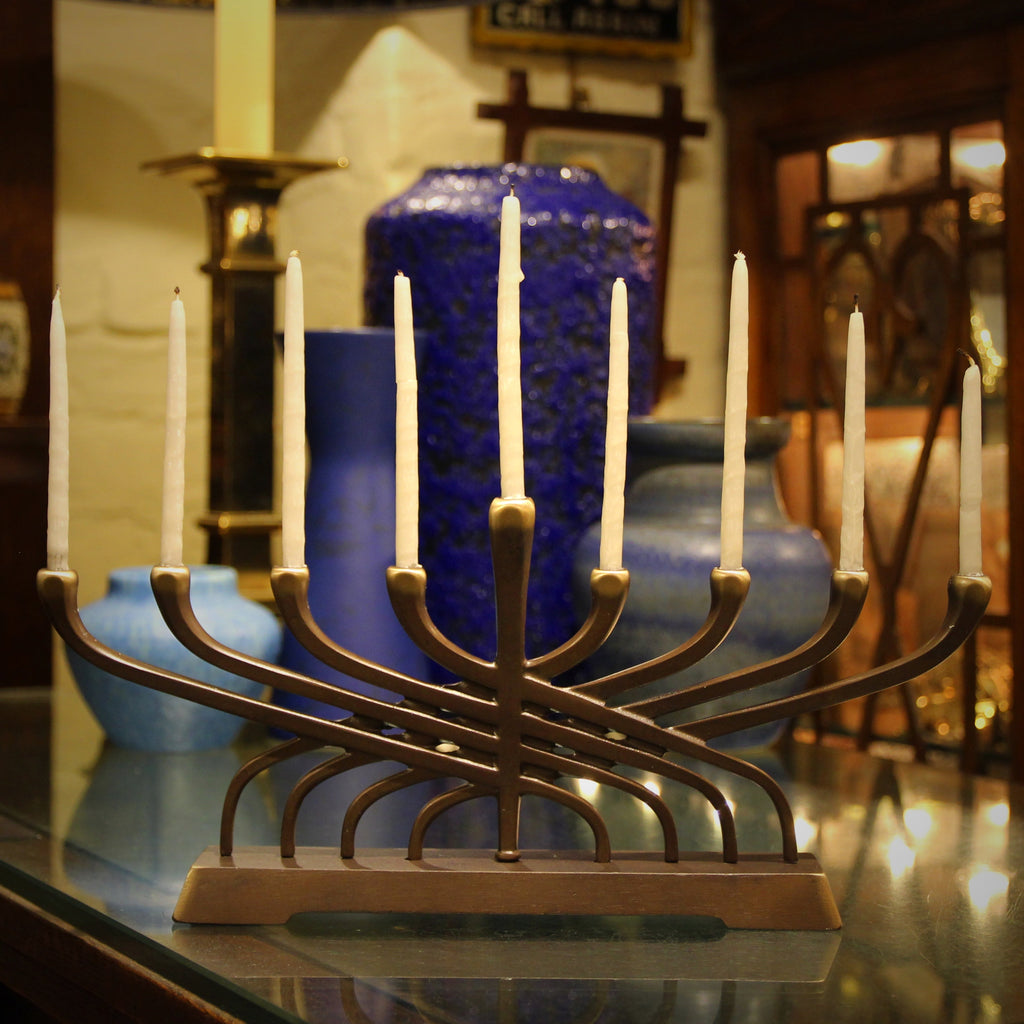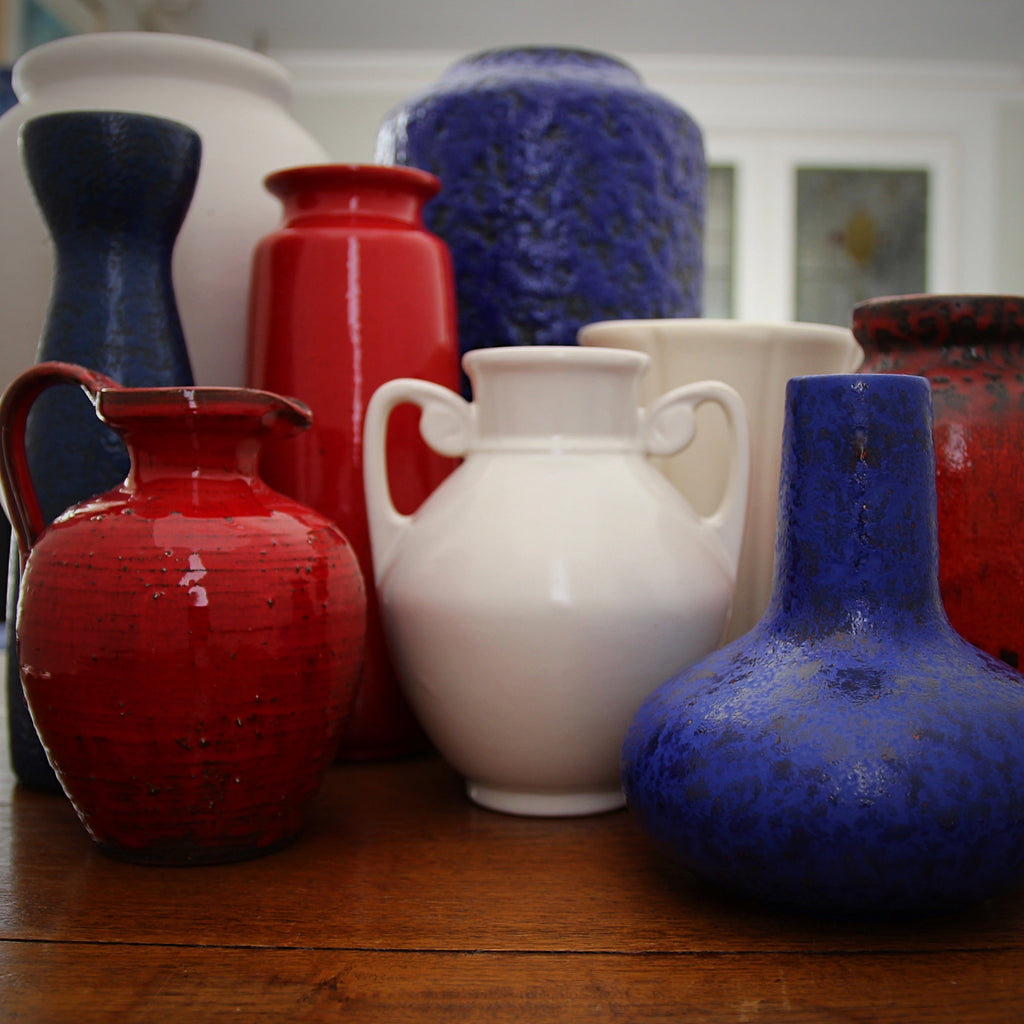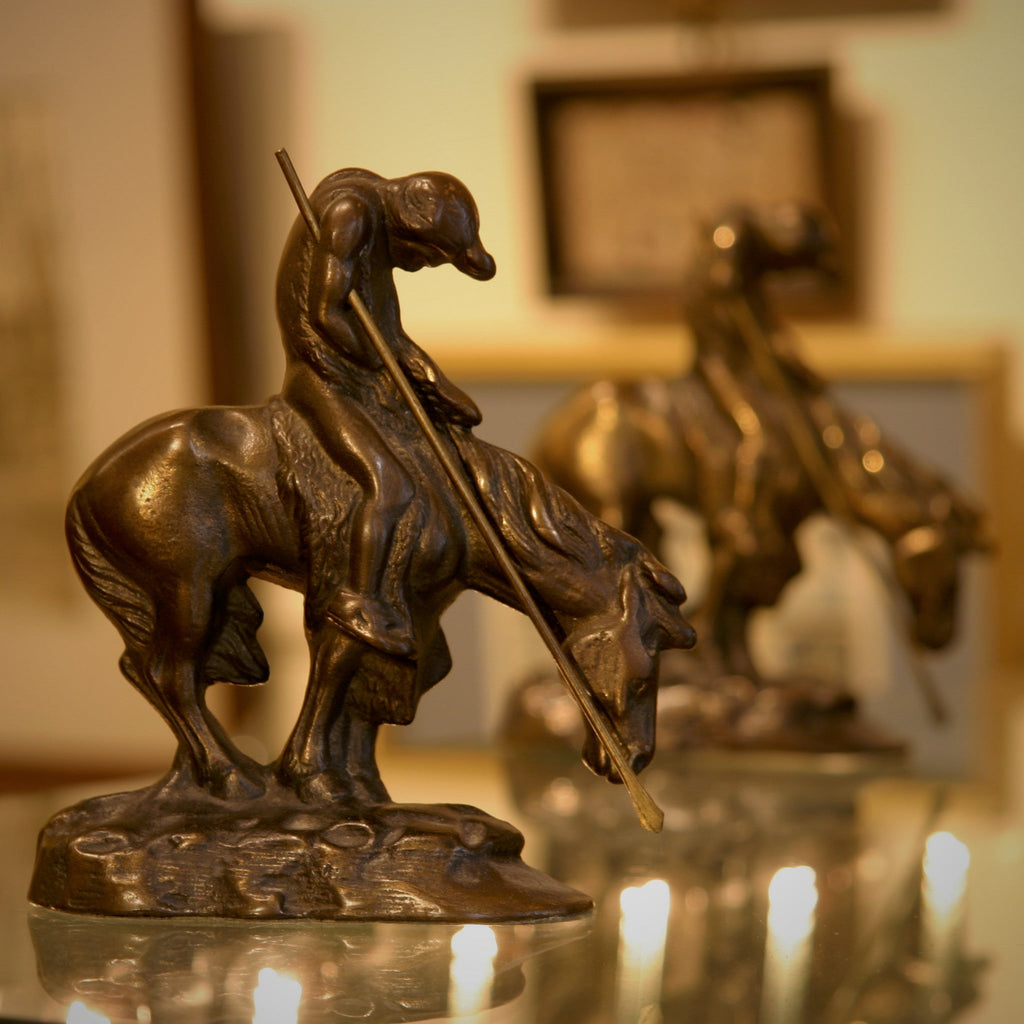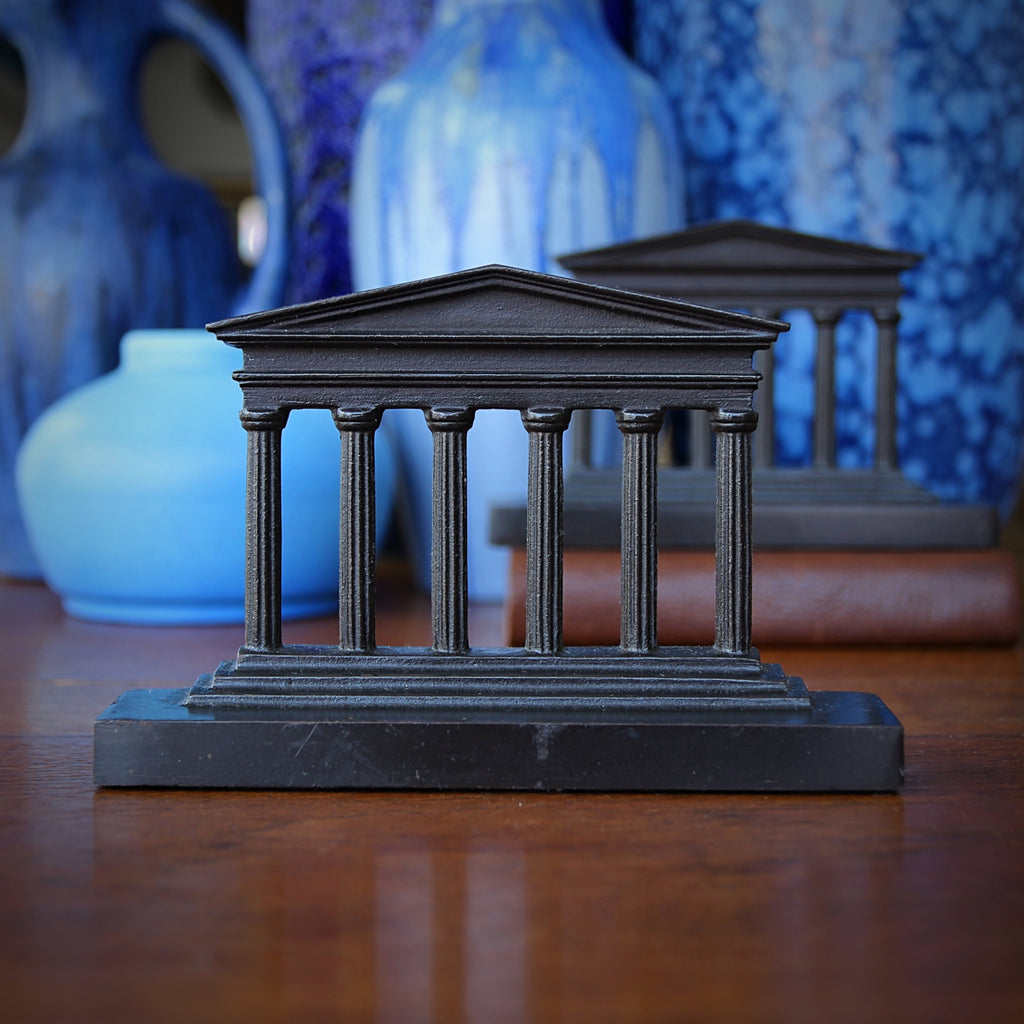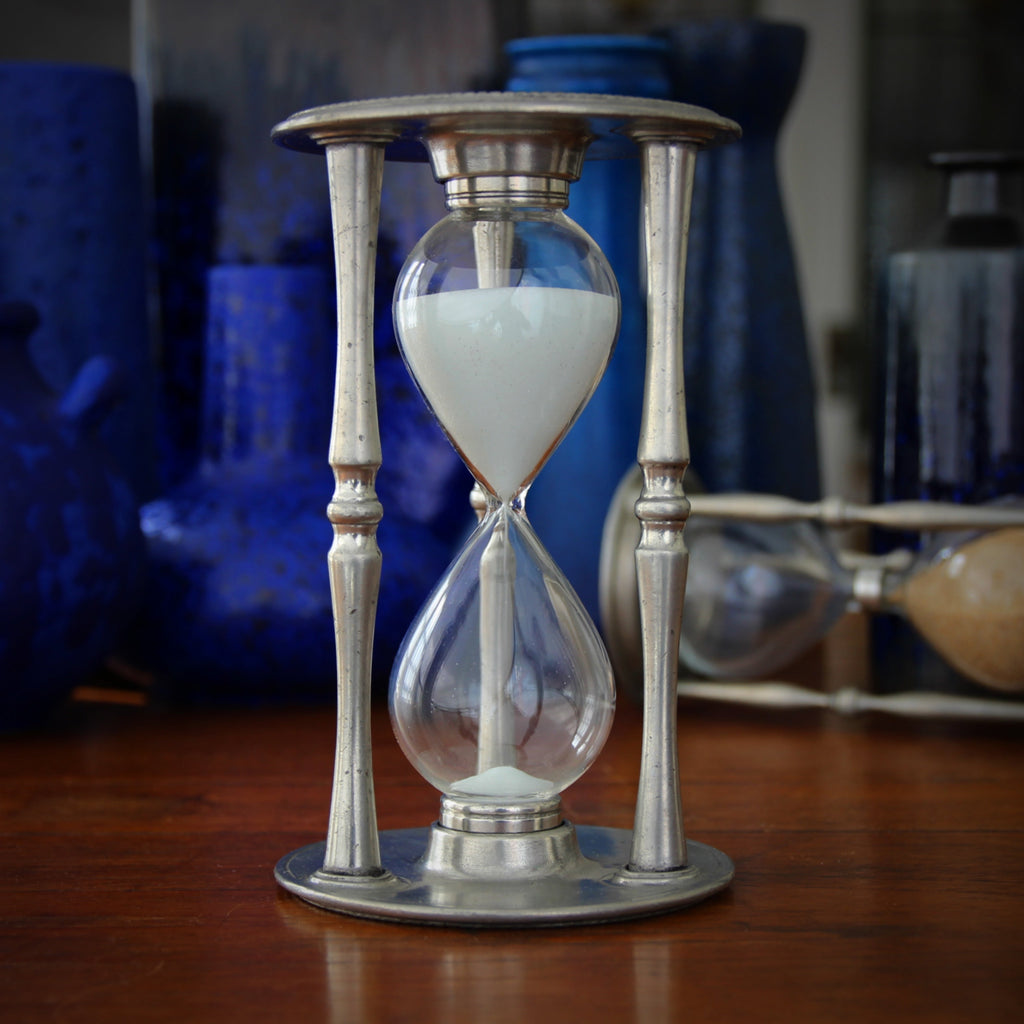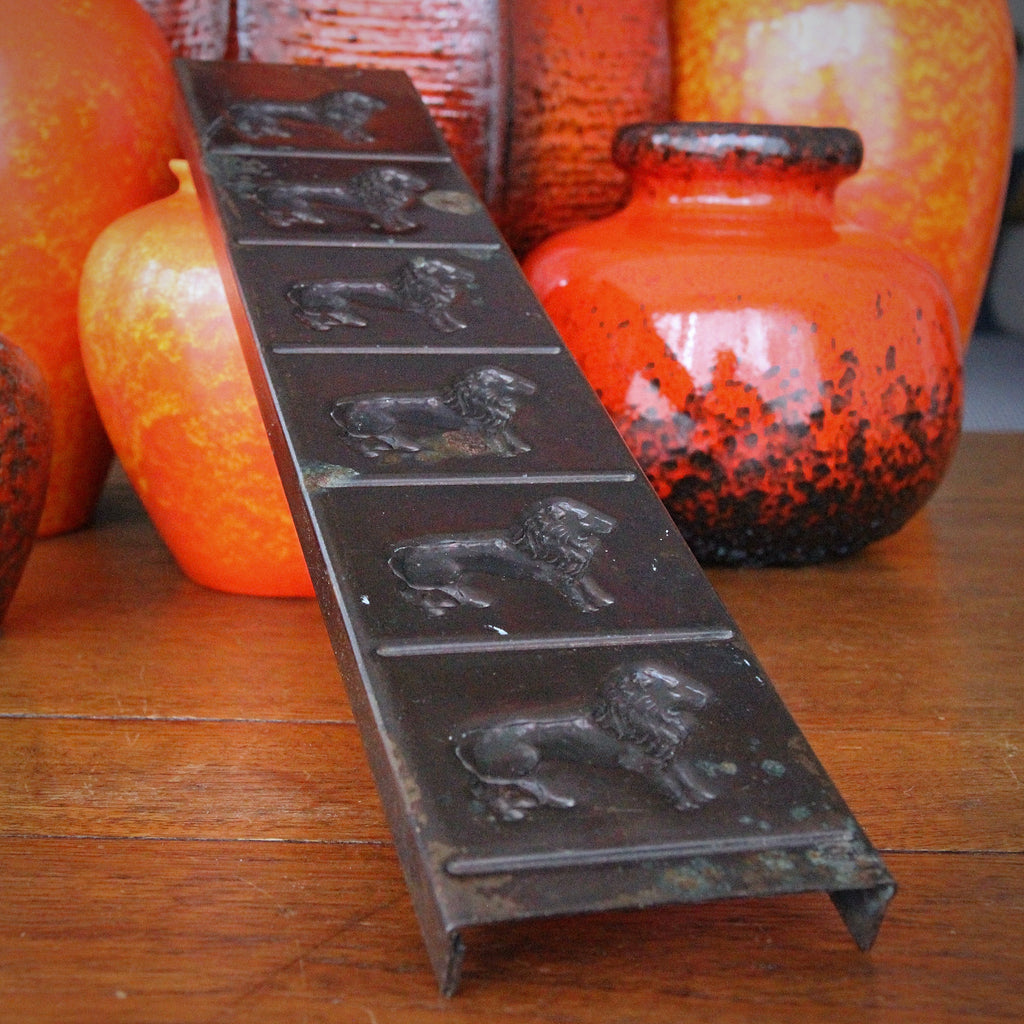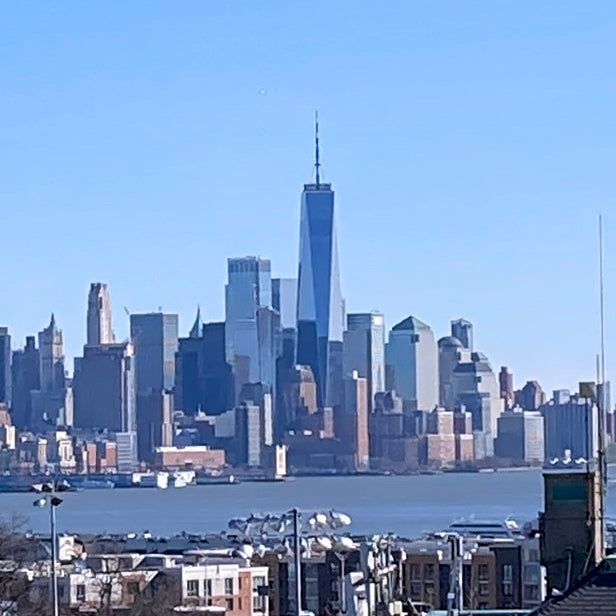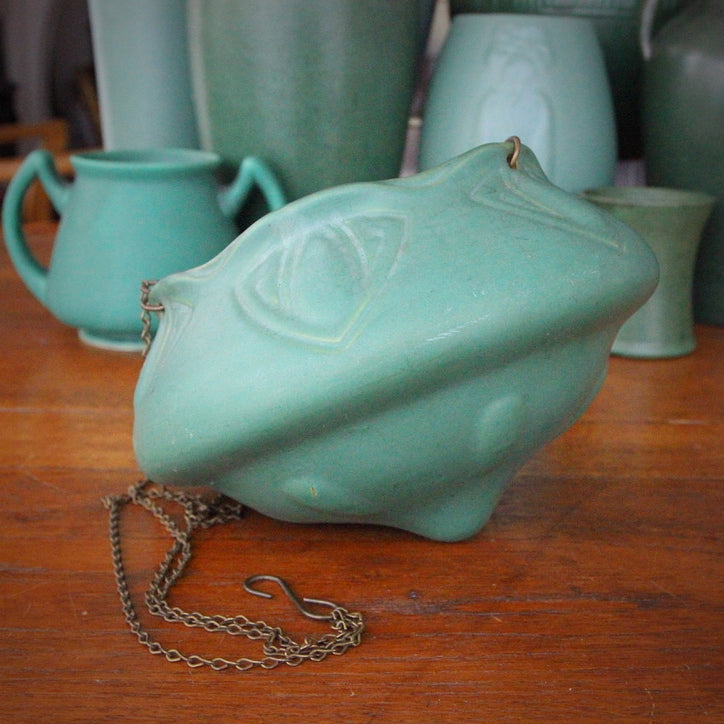JOURNAL RSS
January is here and she brings her handsome birthstone, the Garnet. Garnets are not the most exclusive of stones. In fact, some consider them "a poor man's ruby." But I have always loved the dark, red color of the stone. And I like the way that garnets are often assembled—en masse—within gold Bohemian settings (a style called "pavé" in which many small stones are cobbled together, like paving). Garnets are actually a range of stones with differing compositions. They are most often recognized as deep red, though many other colors can be found. Blue garnets are the rarest variety. Garnets are mined in India, Sri Lanka, Myanmar, Russia, Africa and Madagascar, and within Canada and the United States. Some "species"...
A New Year
Each New Year offers the promise of change: improvement, recalibration, redemption. Most years, my resolutions have been centered on selfish personal development (usually diet and exercise). Maybe this year.
In these past few years, each New Year has begun to provide me also a glimmer of optimism: perhaps this will be the year where our country (and the world) turns a corner, does right, embraces goodness, and seeks redemption. Maybe this year?
May you have a New Year of health and happiness. May good things happen to you and to those you care about.
And thank you for your support of LEO Design over the past year.
New Year's Eve
Every year, just before New Year's Eve, we get a small rush of customers buying champagne and cocktail glasses for their last night gatherings. It seems they are resolved to up-their-game before the clock strikes twelve. Above, see a set of eight (plus one) handsome crystal champagne or cocktail stems. Made in the years just after World War Two, they have a corseted, "tulip form" bowl—which provides visual tension to the design and slows the release of the champagne's bubbles. The softly-curving lip makes the glass a pleasure (and a little easier) to drink from. And the faceted stem gives the glass a "crisp handfeel," making it easier to control the vessel. A stem, of course, prevents the transfer of...
Careful Curation
At LEO Design, we always have carried a mixture of Handsome Gifts—some of them antique, some of them newly-crafted. But, because of our large cache of antiques, we have always been careful about not carrying contemporary items which might be confused as an antique. While we do not want people to feel misled, we also are proud to lean-into the excellent craftsmanship of contemporary artisans (when we find them). Thus, very few of our contemporary pieces were outright reproductions, posing as antique items. One rare exception is a line of (wonderful) frames—gold-plated, enameled and hand-set with Swarovski crystals. Consider the "Imperial Gold-Plated" frame shown above. I have loved this line of frames from the moment I first found them. They are...
"Between the Wars"
It's enticing to believe that distinct aesthetic schools start (and stop) on a particular day in history. For example, that the Renaissance ended one morning and Mannerism began that same afternoon. But artistic movements—and the human artists who create them—don't stick to hard-and-fast timetables. Elements of one movement (say, the Aesthetic Movement) still may be visible in the next school of design (say, the Arts & Crafts). Humans—including artists (especially artists)—are often driven by their own creative wills and temporal needs, not the precisely regimented timetables of academicians who will follow in later years (or centuries). It is also true that one nice antiquity may have the "visual genetics" of two or more aesthetic schools (to successful or unsuccessful effect)....
The Greek Key
I have always loved the Greek Key decorative motif. On pottery, on glassware, in architecture or on photo frames (like the one shown above), a little band of Greek Fretwork can never be too much. Often, it's just enough. A Greek Key is a continuous decorative line which "meanders" along an unbroken and repetitive pathway of right angles—always moving forward, taking frequent 90° turns (in both directions) and sometimes undergoing temporary switchbacks. Though a Greek Key almost always progresses in a directional line, the right angles create an interlocking, maze-like appearance. The unbroken line can be interpreted to represent unity, infinity or continuous flow. Sometimes two (or more) Greek Key lines are "interwoven" to create a complex fretwork—highly elaborate but...
Brass
Simply put, brass is an alloy (a metal mixture) of two-thirds copper and one-third zinc (although these proportions can vary, and other metals introduced, to create a variety of desired effects). By changing the composite metals (and their proportions), brass can be manipulated to be better suited to heat, salty conditions, to affect the coloration, or to make a better-sounding musical instrument. Objects made of brass-like alloys have been found since ancient times, however, the proper scientific understanding of brass (and brass-making) really coalesced during the Renaissance. Before that, the brass mixtures were more crudely formulated. What became understood during the Renaissance was the importance of trapping zinc vapors by covering the crucible (the large pot in which metals were...
Happy Boxing Day!
Boxing Day—the day after Christmas—is a national holiday in England and in many of the British Commonwealth Countries around the world (that is, those countries which were once British territories). Boxing Day was the standard day off granted to the household servants of British aristocrats (as staff were expected to attend their employers on Christmas Day). On 26 December, servants would receive "boxes" from their masters containing food, money and other gifts. It was also a day when the poor might receive alms—monies collected by the Church in alms boxes. (Recall the carol about "Good King Wenceslas" who brought charity [alms] to the needy, through deep snow, on the Feast of Saint Stephen—26 December.)
Merry Christmas
Wishing all a very Merry Christmas
—and a New Year of Peace and Contentment.
Many thanks for your support throughout the year.
Fondly, Your Friends at LEO Design.
Christmas Eve
Christmas Eve was always a special night in the LEO Design shop in Greenwich Village. We always stayed open until 10:00 pm. Most of the day's Holiday Hustle already had died down by 7:00 pm.. And the customers who did come in—usually after dinner—were in a good mood and, often, feeling little pain. They were relaxed because they were staying in the city for Christmas. Nowhere to go but home! These customers might find a gift for someone they were seeing at New Years or, better yet, something nice for themselves. We used the quiet hours to fill-in merchandise, re-organize as needed, and change the window before Christmas Day. This always meant installing our pair of Italian polychromed terracotta angel...
White Christmas?
After a week in the single digits, and three days of snowfall, it looks like Christmas Day will be 55° and rainy. A White Christmas does not seem to be in the cards. Oh well, there'll be plenty more time for snow. Plus, we have these handsome French crystal "snowflake" paperweights—a year 'round reminder of the powdery white stuff.
These paperweights were cast in France in the 1980's. A dimensional lacy snowflake glistens softly under the paperweight's dome of crystal.
Ting-a-Ling
We live in a modern world of alarms, alerts and other audible signals—many of them emanating from the electronic device waiting in our back pocket. For good or bad, we are now conditioned to respond immediately to any such interruptions—as the signal pierces not only our ears, but our consciousness. Such "call systems" are not new. In the old days, bells and whistles were used to call people to a purpose. Mistresses would ring a little bell when she needed help dressing or wanted the tea brought in. Factory owners would blow a horn when a work shift was about to begin. And teachers would ring a large triangle when it was time for class to assemble. In these old-time...
Winter is Here
Despite several 7° days—and many inches of snow—Winter only begins today. It is the Winter Solstice, the day when the Northern Hemisphere is most tipped-away from the Sun in the Earth's annual "axis-wobble," toward and away from the Sun. That makes today the "shortest day of the year," the day with the least amount of daylight. And, starting tomorrow, the daylight will begin to shine longer and longer. But the coldest months of the year are yet to come. The mercury thermometer, shown above, was made at the Turn-of-the-Century as an "advertising piece"—a giveaway to customers of the Gall & Lembke Optical Company, 21 Union Square, New York City. The thermometer is mounted to an engraved brass plate, attached to...
A Handsome Cut
I dislike smoking. The idea of intentionally inhaling smoke into one's lungs is mystifying to me. Despite this, I frequently like the smokers themselves—and I have always appreciated the elegant accoutrements of smoking: ashtrays, tobacco jars, smoking stands, cigarette holders. The Spanish cigar cutter, shown above, is an example of the aesthetically-pleasing tools a smoker may require. The cutter has an industrial sensibility; in fact, the company which made it once manufactured office accessories. Today, such a cigar cutter would look good in any office or smoking den—whether that space has an industrial, traditional or Turn-of-the-Century sensibility.
The End of the Inkwell
Before the invention of the modern pen, an inkwell remained a necessity if one wished to write with ink (vs. writing in pencil). Such an inkwell could be as ordinary as a little stoneware pot. Or it could be as luxurious as a golden-enameled Fabergé fixture standing upon a Tsar's desk. Quills and pen nibs had to be dipped frequently into the ink while writing. In 1809, the first patent was issued for a "fountain pen"—that is, a pen which held a supply of ink within its body, thus eliminating the need for constant dipping. (Although variations of this design had been attempted and used prior to 1809.) Even fountain pens needed to be refilled now and then (sometimes at...
Organization!
Organization! Each New Year begins with the same resolution: "This year I really need to arrange this . . . or set-up that . . . or create . . . whatever." Perhaps, in its very small way, this Turn-of-the-Century desk accessory will move you just a little closer to this goal. It was made to promote "K-Diamond" (a company which we have yet to identify). Perhaps it was given-away to customers or left-behind by a salesman after a sales call. The cast iron "feet" curl upward—like a pair of boots—providing two convenient spaces to store a pen or pencil. The central spring accepts note cards or letters. Because the spring slides back and forth, the holder will accept envelopes...
Art vs. Utility
When is a tray not a tray? Perhaps when it's too beautiful to cover-up and use—like this Belgian Art Nouveau bronze tray. It was made by G. Huygens, a Belgian sculptor of Dutch ancestry. What this small tray does—superbly—is to provide a sculpted decorative accent upon a table top or low shelf. It would be useful for presenting business cards, offering small (wrapped) candies, or as a caddy for wallets and mobile phones (though I would avoid scratching it with coins or keys).
While the works of G. Huygens can be found at the occasional auction, there is a surprising lack of biography to be found about him.
And Five Days 'til Winter!
You mean Winter hasn't even started, yet? No, alas, Winter still is five days away! Yet the wintry blast is upon us. I've shoveled (twice) and already pulled-out my fake-fur hat ("hat hair" be damned—I usually wait much longer to submit). It is cold and icy and Pittsburghers already are cancelling their plans—whether joyous or obligatory. I don't remember "The Snow" posing such a threat to New Yorkers. In New York, one cannot easily avoid the meteorological elements (or other New Yorkers). One must leave the apartment, alight the sidewalk, and walk (outdoors) to the store, to work or to the subway. Snow (or "pending snow") never seemed to affect New York denizens—with the exception of generating a surge in Chinese...
Ten Days 'til Christmas!
With only ten days left before Christmas—it's time to fly!
Each of these adorable, red owl ornaments conveys a different attitude, character and personality. They were carved of gourds in Peru. Each (differently-shaped) gourd is hand-incised, hand-painted, and darkened (in spots) with a flame. The process allows the artists to imbue each ornament with its own, unique personality.
Happy Hanukkah!
Hanukkah begins tonight at sundown. Wishing all a Happy Festival of Lights! Every great now and then, depending on the idiosyncratic inter-cyclings of the Hebrew (lunar) and Gregorian (solar) calendars, there may be two Hanukkahs in one calendar year. 2025 is such a rarity! Last year's Hanukkah ended on 2 January (2025) and this year's begins on 14 December (2025)—two Hanukkahs in 2025! Even more strange (and more rare) is a year in which where there will be no Hanukkah at all. 3031 (more than a thousand years away) will be such a year with no Festival of Lights (although there will be two Hanukkahs in 3032). This has never happened before—at least not in the 16 centuries since...
Extra Help for the Holidays
Trays are amongst the simplest—yet most useful—of household accoutrements. Compared to carrying-by-hand, trays allow one to transport three (or four) times the amount of volume of that which must be carried. Trays can be fancy and decorative or they can be handsomely utilitarian (like the Edwardian English Oak Butler's Tray, shown above). I use trays when setting the table. In the kitchen, I pile-on all the plates, glasses, napkins, silverware, and serving pieces (pitchers and utensils). Using the tray allows me to make one trip to the dining room. I use trays when serving my guests (first drinks, then supper, then dessert). And the tray is useful for clearing-away the table at the end of the night. When I head...
Letterknives - V
Let's end our short parade of letterknives with this Rococo Revival specimen—made in England in the Teens or Twenties. Heavy and handsome, it would add dramatic punctuation to any nice desk. The Rococo Movement (of the 1700's) immediately followed the Baroque Period (of the 1600's and early 1700's). While both movements were expensive, opulent and theatrical, they pursued different purposes and each employed a different aesthetic vocabulary. The Baroque (which followed the Renaissance and Mannerist Eras) was a bold and masculine assertion of grandeur, drama, seriousness and dominance—coincident with the Counter-Reformation efforts of the Church which sought to define itself in contrast to the austerity of the breakaway Protestant denominations. The Baroque was noted for its massive scale, symmetry and...
Letterknives - IV
The Japanese letterknife, shown above, is more like a handsome piece of jewelry than a utilitarian desk accessory. The chromed blade extends from a silver handle—ambitiously hand-engraved with scrolling botanicals. Furthermore, a retractable penknife folds into the handle—ever-ready to sharpen one's quill pen. This handsome letterknife was made in the 1950's.
Letterknives - III
Knights in armor continue to stir emotion, even in the modern mind. Dashing, brave and driven by honor, knights gallant hold an honored place in Medieval and Romantic literature. Perhaps it is the chivalry. Possibly it is The Quest. But let's not discount the fancy dress!
This Belgian Art Nouveau brass letterknife takes us back to the Days of the Chevalier. He stands posed atop the letterknife's hilt, mace in-hand at at-the-ready. He might bring a touch of Gothic interest (and usefulness) to the well-appointed desk.
Letterknives - II
This elegant letterknife boasts handsome, scrolling botanical engraving. It is silver-plated and comes with an elegantly decorated sheath. This letterknife is simultaneously understated and theatrical—reminiscent of a stage dagger. It was made between the world wars.
Letterknives - I
Letterknives have always been part of the mix of LEO Design's "Handsome Gifts." They are attractive, useful, and can be found in every imaginable aesthetic style. Letterknives often are a featured player on a well-dressed desk—perhaps like a piece of jewelry accenting a beautiful outfit.
Shown above, a handsome, vintage chromed letterknife with a heavy, turned, three-stone handle—perhaps alabaster. The shape is masculine and classic and it was made in the Eighties.
Infamy
Eighty-four years ago today, Japan attacked Pearl Harbor, which was the strategic American naval base in Honolulu, Hawaii. It was a bold and reckless move which awoke the sleeping U.S. giant—which previously had been trying its best to ignore the March of Fascism in Europe. This unexpected, early-morning onslaught ignited a succession of actions which (for good or bad) would define America (and the World) for decades to come. Within 24 hours of the bombing, President Franklin Delano Roosevelt appeared before a joint session of Congress, asking them to declare war on Japan. Legally, Congress (not the President) has the sole discretion of authorizing war—a constitutional fact which FDR observed. FDR began his address—broadcast nationwide—with, "Yesterday, December 7th, 1941—a day...
Shiny Brite
Max Eckardt was born in Oberlind, Germany in 1890. In 1926, he and his brother Ernst, opened a glass ornament-making firm, exporting some of them to New York City (where they opened an office). Later in the 1920's, Max moved to New York City himself where he oversaw the importation of German glass ornaments. But the political scene in Thirties Germany was worrying—and Max anticipated that his source of German ornaments would soon be curtailed (and probably avoided by consumers). So, in 1937, Max Eckardt convinced Corning Glassworks to modify their lightbulb-making machinery to quickly mass-produce clear glass balls (ornaments). These plain glass spheres were shipped to Max who decorated them in his new plant in Wellsboro, Pennsylvania (some 35...
Merii Kurisumasu!
After World War II, many of our fiercest enemies became our closest trading partners. The 1950's saw a huge shift in worldwide manufacturing dynamics—especially when it came to inexpensive, low-tech, labor-intensive items. After the war, America (the victor) enjoyed a very different economic landscape than countries like Japan and Germany (the vanquished). America, which experienced no warfare on its soil (with the exception of Pearl Harbor) enjoyed an economic boom based on education, technology, and high-end manufacturing (houses, automobiles, appliances). Americans used the GI Bill to educate themselves and their wages began to grow. On the other hand, Japan (and Germany) were left devastated—physically and economically. Their countries lay in ruins and they were desperate to get their people working...
Beaded Garland
Glass beads—strung in a garland—are a wonderful decorative element on a tree, wreath, centerpiece or hanging in an archway. This garland, created in the Thirties or Forties, is eight feet long. Blown glass "diamonds"—colored in bright greens, blues and pinks—are interspersed with silver double-bead "dumbbells." The beads are crafted the same way glass ornaments are made: a glass tube is heated and mouth-blown into a metal mould (in this case, a succession of eight to ten interconnected beads). Once the mould is opened and the glass "tube" is cooled, the interior is "silvered," the colored beads are lacquered, and then the beads are cut-apart from one another.
German Feather Trees
In the Late-Nineteenth Century, after Industrialization had begun to take its toll on the German landscape, deforestation had made it impractical to cut-down sufficient numbers of living pine trees to supply the Christmas tree trade. Local craftsman began creating "feather trees" out of dyed goose feathers—which made them, essentially, the first "artificial" Christmas trees. Goose "biots" (that is, the split wing feather from a goose) could be wrapped around wire "branches," creating an attractive and realistic-looking pine branch. Several such branches were then fitted into a dowel trunk, well-spaced to leave plenty of room for the hanging of ornaments. These feather trees, reminiscent of white pines, first became popular in Germany in the 1880's. By 1900, German-Americans began using them,...
Yule Tree Roots
Cutting-down, bringing-in and decorating an indoor Christmas tree began in Germany in the 16th Century. For two or three centuries, these trees were decorated with candles, fruit and nuts. German immigrants to America brought the tradition with them in the 1830's. In the Mid-Nineteenth Century, in the German town of Lauscha, glass artists began blowing glass ornaments to hang on their Christmas trees. These mouth-blown balls—called "kugels" in Germany—could be colored or hand-decorated and, in time, they were made to emulate the shapes of the fruits and nuts which had commonly been used as decorations. German-born Prince Albert, consort and husband of Britain's Queen Victoria, helped popularize the fashion of Christmas trees in England. They were married in 1840, giving...
World Aids Day
Today is 1 December, World AIDS Day. It is a day when the world advocates for the prevention and treatment of AIDS—and encourages scientific research to achieve those worthy goals. World AIDS Day was established by the World Health Organization in 1988 with the intent of recognizing the scourge of AIDS, commemorating those who have died from it, and supporting those who live with it.
While much of the world commemorates World AIDS Day today, (the current) U.S. leadership has instructed government officials to cut AIDS research funding and to not acknowledge the observance publicly. Somehow, they assert, America does not care about AIDS.
Hanukkah Blue
The traditional colors for Hanukkah are blue and white—sometimes with silver (or gold) added as an accent. Typically, the shade is Royal Blue or Indigo—like the blue of the Israeli flag. But, in recent decades, different shades of blue may be used to create the wintry-crisp, blue and white coloration.
The mercury glass beads, shown above, are colored a satisfying, icy-teal blue. They may have graced a Christmas tree in earlier years. But their cool winter blueness would make them a wonderful addition to any Hanukkah decor.
Golden Oldies
In years past, Christmas trees were swagged with lengths of mercury glass beads—either multicolored or composed of one color. The glass beads were created by the same process used to make any other glass Christmas ornaments: a heated glass rod would be blown into a metal mould. In the case of the beads, the mould was long and skinny, creating several (about eight) interconnected beads at once. A silvery metallic liquid (originally mercury, later silver nitrate) was injected into the tube to create a reflective, mirror-like base color. The desired color of the bead could be realized either by using a colored glass rod or by coloring the glass topically after blowing. The interconnected row of beads was then cut-apart...
Black Friday
It's Black Friday. After a precious day off for Thanksgiving, merchants view this milestone as the "starting gun" of the Holiday Shopping Season. The name, "Black Friday," suggests that (on this day) retailers go from being "in the red" to "in the black." This oversimplification is rarely true. But the anticipation of brisk sales warms the hearts of shopkeepers. These December weeks may help correct for slower summer months. And good sales during the Holiday Season will ensure that the merchant's investments (merchandise, staff, decor, supplies) will be paid-off. While I've been a merchant all my adult life, I have worked hard to remind myself that bountiful sales will never be the season's most important reward. Yes, they help. Yes,...
Thankful.
Happy Thanksgiving! We're thankful for many things: our families, friends, good health, and the rare day when the busyness of commerce comes to a standstill (at least for one day). And we're thankful for the blessings of wonderful customers who continue to support LEO Design. May you have a wonderful, safe and relaxing Thanksgiving. Take stock of that for which you may be grateful. And we look forward to serving you in the next few weeks. Shown above, a sculpture of The Sluggard by Sir Frederic, Lord Leighton (1830-1896). While Leighton is best known for his paintings, he did create three exceptional sculptures during his career (all male nudes). One day while Leighton was painting, his handsome Italian model, Gaetano...
Coming Soon: Boxing Day
Boxing Day is one month away!
26 December, known as Boxing Day, has been celebrated (in various ways) for centuries. It is associated with the Tenth Century Bohemian "Good King Wenceslas" (in what's now part of Czechoslovakia) who braved terrible cold and snow to bring alms to a poor peasant on the Feast of Stephen (26 December). In England, the term "Boxing Day" has been found in print since 1833. Charles Dickens also used the term in The Pickwick Papers (1837).
Boxing Day, the day after Christmas, is when servants were given their day off to celebrate the holiday (since they were expected to serve their masters on Christmas Day).
One Month 'Til Christmas!
Where has the year gone? Only one month 'til Christmas? In many ways, the year seems to have flown-by. (Though, on some days, the year seems to be crawling torturously.)
We've acquired a small collection of vintage Holiday decorations: blown-glass ornaments and mercury glass beads. They are all vintage—from the Early- or Mid-Twentieth Century—and some of them were made by the collectable maker Shiny Brite.
Shown here, a dozen Shiny Brite one-inch balls, kept safe in their original printed box.
Autumn in New York - Part Ten
Let's end our trip to New York with a potpourri of handsome and wonderful items—all from the collection of the Metropolitan Museum of Art in Manhattan.
Shown above, an impressive young man who looks none of his 1,800 years old. He was carved of Schist in (what is now) Pakistan in the Third Century AD. He is called "The Buddha of the Future." I'm sure he would turn-heads walking down the street today.
Next we have a Late Renaissance Roman bronze sculpture—a double-tailed Siren—created in the last decades of the Sixteenth Century. She probably once stood outdoors and up-high—perhaps on a fountain or over a gate—on the estate of the powerful Colonna family of Rome.
Autumn in New York - Part Nine
Divine Egypt is an exhibit at the Metropolitan Museum of Art. While I love Egyptian history, art and artistry, I find the pantheon of Gods and Pharaohs to be overwhelming—and confusing. There are so many characters to consider—both divine and human—and there are variations and permutations which add further complexity to the list of names. The Divine Egypt exhibit was helpful in that the artistic objects were clustered together according to the individual god or goddess—not chronologically, not by kingdom, and not by some other scholarly theme. In this way, I was able to "sort-out" and mentally compartmentalize the abundant beauty presented before me. At the entrance to the exhibit, we are greeted by a diorite sculpture of the god...
Autumn in New York - Part Eight
We've always loved ceramics at LEO Design—in every form: vessels, plaques, sculpture or architectural elements. Today we'll share a handful of interesting ceramics pieces from around the world—all in the collection of the Metropolitan Museum of Art. Shown above, an Eighteenth Century porcelain lion. He was made around the year 1732 by Johann Gottlieb Kirchner in Meissen, Germany (about 15 miles from Dresden and 60 miles from the Czech border). This lion was part of a series of large porcelain beasts created for the Japanisches Palais in Dresden. The palace was built in 1715 and expanded shortly thereafter to house the Japanese porcelain collection of King Augustus the Strong. (Collecting Asian ceramics was the rage amongst European aristocrats in the...
Autumn in New York - Part Seven
Emmanuel Radnitsky—better known as Man Ray—was born in Philadelphia in 1890. At the age of seven, his family moved to Williamsburg, Brooklyn. His family worked in the garment industry—even running a small tailoring shop in their home. He studied art and technical drafting and was offered a scholarship to study architecture which he declined. He chose to pursue art instead. His family, though disappointed, allowed him to convert his bedroom into an art studio. In 1921, at the age of 31, Man Ray moved to Paris where he would live and produce most of his art. He died in Paris in 1976 and is buried in the Montparnasse Cemetery. Man Ray always considered himself a painter, though he is known...
Autumn in New York - Part Six
Let's end our long tour of the Metropolitan Museum's Greco-Roman galleries with this showstopper: a Roman Third Century highly-carved marble sarcophagus. There are forty human and animal figures carved in high-relief. At center, Dionysos, the God of Wine, sits astride a panther. A satyr and other Bacchic figures surround him.
Flanking Dionysos, are four human representation of the Four Seasons, two on each side of him. Usually, such symbolic representations employ females. In this case, however, the sculptor(s) portrayed male youths. From left to right we have Winter (holding a brace of ducks), Spring (carrying a basket of flowers), Summer (carrying wheat) and Autumn (bearing a cornucopia of fruit).
Autumn in New York - Part Five
The Greeks (and then the Romans) made more than just handsome, masculine sculptures. They decorated their homes (and themselves) with beautifully-crafted works of art. Today, we'll share some of these items which we encountered in the Greco-Roman galleries of the Metropolitan Museum of Art. The Greek influence (called "Hellenization") was widespread. It spread in three distinct ways. First, the Greeks conquered many areas, physically moved-in, and asserted their culture through the subsequent colonization. Second, Greek artworks were sold, imported or traded to far-flung lands—even those which the Greeks did not colonize. These artworks had a strong influence on the aesthetics of the importing lands. And third, people like the Romans fueled "Greek Revivals" of Hellenistic art, culture, philosophy and social...
Autumn in New York - Part Four
The Metropolitan Museum has a wonderful and handsome wing full of Greek and Roman antiquities. The collection is wonderful—as is the presentation. Over the next couple of days, we'd like to share some of the Greco-Roman items which caught our eye in these galleries. Over the millennia, the "idealized" male form—as depicted in Western art and embraced in Western culture—has not changed much. True, there are a couple of "types." There is the lean, athletic body of a youth. And there also is the strong, muscular build of a mature man. These are two (idealized) representations of the same man as he passes through different stages of his life. Ancient sculptures of nude males look much like the idealized male...
Autumn in New York - Part Three
New York has frequently put advancement over sentiment. "Progress" over preservation. So many beautiful New York buildings have been torn-down, only to be replaced by something ugly—and that replacement is usually a pale comparison of the handcraft of the original building. Think of the fabulous Beaux-Arts Penn Station on Eighth Avenue. Or the Art Deco Bonwit-Teller Store on Fifth Avenue. Both architectural gems were destroyed to make way for cheap and ugly replacements. Neither could be called "progress."
But, even today, a stroll-about New York City always delights with unexpected architectural gems and architectural details. Sometimes these delights are big, sometimes they are small. And sometimes, thankfully, a community will insist that the historic past be restored and preserved.
Autumn in New York - Part Two
Central Park has been called "the lungs" of New York City. It is also a place of refreshment, regeneration and relaxation. It is surprising how one can feel totally enveloped by nature—and sometimes feel alone—while only minutes from a bustling city of 8.5 million people. This "dose of nature" has a profound civilizing effect upon those who encounter it. Of course, Central Park is a masterpiece of "Man and Nature." The park was highly planned and landscaped. But the genius intent was to create an artistic, naturalistic setting—one which took advantage of the slopes, ravines and boulders—to create the feeling of wilderness. I am always amazed at how many "little, private spaces," numerous nooks and crannies, have been created in...
Autumn in New York - Part One
Among the frights—while driving through the suburbs—is the proliferation of overwhelmingly-large Hallowe'en decorations which seem to have become en vogue in recent years. Lighted. Mechanized. Sometimes inflatable. These decorative investments demonstrate the growing love Middle America feels for All Hallow's Eve. A recent Ipsos poll has revealed that one-in-three Americans name Hallowe'en as their favorite holiday. We drove to New York today and will spend the week here. I have found that Hallowe'en may be even bigger in Manhattan! Though the "front yards" are considerably smaller, the ghoulish intentions of the inhabitants are just as evident. In fact, New Yorkers may win extra points for home-crafting their displays—no plug-in Home Depot erections here! And, of course, the question remains, "Where...
Chrysanthemums for November
Welcome, November, and your birth flower, the Chrysanthemum. Chrysanthemums (sometimes called "Mums") are associated with the Autumn, when the perennial typically blooms. There are tens of thousands of varieties, cultivars and hybrids—and they have been developed by mankind for thousands of years. The flower originates in East Asia and it was the Chinese who began cultivating them (circa 1500 BC). They made their way to Japan in the Fifth Century AD, and it was here that their intense cultivation reached the greatest heights. Japanese art and culture frequently reflects nature which has been "perfected" through careful and thoughtful adaptation, editing, rearrangement or human manipulation. Think of zen gardens, koi fish, bonsai, or ikebana. The same is true of chrysanthemums, which...
All Hallows' Eve
Today is Hallowe'en, Day One of the three-day "Allhallowtide": Hallowe'en (31 October), All Saints' Day (1 November) and All Souls' Day (2 November). All Saints' Day and All Souls' Day are two important celebrations in the Church—commemorating "the faithful departed" (first, for those we know to be saints and, second, for those we don't know, yet). All Saints' Day was first celebrated in 609 AD. The date was later moved to 1 November (in the 730's AD), where it remains to this day. In recent times, the vigil on the night before All Saints' Day (Hallowe'en) has taken-on a secular dimension. Today, children dress-up in costumes and go door-to-door, asking for treats. But the following day, All Saints' Day, is still an...
Home Comfort
The Wrought Iron Range Company was founded in St. Louis, Missouri, in 1881. The company designed and produced top-of-the-line cookstoves, under the brandname "Home Comfort," and they sent their salesmen door-to-door to sell them. Serious customer prospects would be treated to an in-home demonstration. Not only were the stoves well-made, they had thoughtful features and they looked great. They burned wood or coal.
Home Comfort stoves were made of cast iron and wrought iron. Although cast iron is very strong (and much less expensive to produce), it can become brittle—especially under constant heating and cooling. Home Comfort stoves utilized both types of metal to minimize cracking, which sometimes afflicted their competitors' stoves.
Treen
"Treen" refers to those small, useful objects handcrafted out of wood—not including architecture, furniture, clocks or cabinetry. The word "Treen," itself, means "of the tree." In the old days, metal tools and objects tended to be expensive (and plastic had not, yet, been invented). Therefore, many useful tools and household implements were crafted of wood. With the advent of the Industrial Revolution—with its mass production and economies of scale—metal became affordable to a greater percentage of the population. Laboriously hand-carved wooden items became a little less common.
Technically speaking, treen items can be found all over the world. Most of the treen I encounter today—especially from England, where I often shop—was made in the late Nineteenth and early Twentieth Centuries.
Handsome Jewelry
For decades, I've been acquiring cufflinks for LEO Design—a big part of our collection of Handsome Gifts. But, one cannot hunt for men's jewelry without stumbling over (rather, wading through) lots of jewelry for women. In truth, 99% of jewelry I encounter was made for women. Therefore, as I unearth handsome cufflinks, I will see a lot of women's jewelry the process—and occasionally find an intriguing woman's piece which I cannot pass-up. True, the women's jewelry I acquire is usually more on the "Handsome Spectrum" rather than "The Frivolous." And the Norwegian Art Deco bracelet (circa 1920's-1930's), shown above, fits this description perfectly. It was made by David Andersen in Oslo (or, more accurately, by the workshop he founded in 1876,...
Tea Time!
Tea has been consumed by the Chinese—at least medicinally—since the Shang Dynasty (1600 - 1046 BC). In 1516, Portuguese traders arrived in China where they "discovered" the exhilarating brew. Then, in the 1550's, Italian traveler Giovanni Battista Ramusio published his two volume Navagationi et Viaggi ("Navigations and Travels")—fascinating accounts of the travels of the era's greatest explorers. It was here that Europe first learned about the marvelous, caffeinated brew. In 1610, Dutch Traders from the Dutch East India Company began shipping tea to Europe. It was introduced to France in 1635 and England and Germany in 1650. In those early days, tea was a wildly expensive luxury. It was purchased only by wealthy aristocrats and kept safe—under lock and key—in...
Fire Dogs
The Victorian British loved their tools; in any well-appointed home, there was a specific object at-hand to execute any conceivable function. Spoon warmers. Spill holders. Celery vases. Asparagus tongs. And a beautiful Georgian or Victorian fireplace was often punctuated with a pair of handsome "fire dogs." Fire dogs are a pair of small "struts," usually made of a cast or wrought metal: bronze, brass, or iron. They can be found in any of the various styles which were popular during the Eighteenth and Nineteenth Centuries: Neoclassical, Baroque, Rococo, Gothic Revival, Aesthetic Movement, Arts and Crafts. They were not meant to hold-up the burning log (which is the job of the andirons) but, rather, the fire tools for the fireplace....
Two Months 'til Christmas
Yikes—there are only two months left until Christmas! Perhaps this garland of mercury glass beads will help you (a little) get ready for the big day. Since the time of the Renaissance (and possibly much earlier), Germans have been decorating evergreen Christmas wreaths and boughs with colorful fruits and nuts. In the early Nineteenth Century, German glass artisans began blowing fancy glass ornaments—initially replicating those colorful fruits and nuts. In time, the designs expanded and evolved to include balls, bells, eggs, and figural shapes (all called "baubles"). In 1847, Hans Greiner (of Lauscha, Germany) began developing the first commercially-produced baubles in his family glassworks (which had been founded in 1597). England's Queen Victoria (at the urging of her German husband,...
Kauai-Bound - VII
All good things must come to an end, including vacations and time with family. On our last morning on Kauai, we took a short hike with my sister-in-law, Kristen, and my nephew, Levi. The trail began not far from my dad's house. It was an easy, five mile trek and the views were amazing! Shown above, Mount Makaleha, which, at 3,200 feet high, presides over the town of Kapaa. Translated literally, Makaleha means "to lift-up one's eyes" as if to gaze upon something beautiful. When viewed from a greater distance, Makaleha seems to be the smaller sister of the bigger Mount Waialeale (5,142 feet tall)—which stands at the center of Kauai. Usually shrouded in clouds, it is called (by locals)...
Kauai-Bound - VI
Taro—known as "Kalo" in Hawaii—is a tropical bulbous tuber that was a staple food source for the Ancient Hawaiians. The fleshy tuber is not a root; it is a "corm," a thickened part of the underground stem which holds stored energy for the plant's survival (should water or nutrition become scarce). The plant is believed to have originated in India, Nepal or Bangladesh—and spread (by voyagers) throughout Southeast Asia, Oceania and Africa. It became a nutritional staple wherever it was grown. There is archaeological evidence of taro consumption in the Soloman Islands 20,000 - 28,000 years ago (though it cannot be confirmed if that taro was wild grown or cultivated). British explorer, Captain James Cook, observed sophisticated taro plantations in New...
Kauai-Bound - V
For thirty-five years, Bob and I, together, have been visiting my family on Kauai. We always stay with my father. This year, as a treat, we decided to book two nights at the Grand Hyatt Poipu. We have long been familiar with this hotel. Usually, we would walk through the property's gorgeous lobby to get to Shipwrecks Beach—or we would buy passes to work-out at the hotel's gym. Sometimes we would eat in one of the hotel restaurants. But we had never booked a room. We did this time and, boy are we glad to have done so. The hotel is very nice. It certainly has grandeur—though it is grand without a trace of glitziness. Every element of the hotel...
Kauai-Bound - IV
Hawaii has beautiful beaches. When I go to the beach, I want to see water, sand and mountain cliffs—preferably squished-closely together. Hawaii doesn't disappoint in this regard. But, as I've gotten older, I have grown more wary of too much sun exposure. Now I bring along my father's beach umbrella. And I spend no more than 90 minutes at the beach. I prefer to go every day, for short visits. And I always go home with an enviable tan (and no burn). North of Kapaa, where my family lives, is a secluded, remote beach called Donkey Beach. Apparently, it is the area where the sugar plantations once housed their donkeys. Getting to the beach involves a short, rocky hike. The...
Kauai-Bound - III
My father celebrated his 90th birthday two days ago. Though we have had celebratory meals every night this week, tonight, Saturday, we gather for the big party. My father was born in Boston's Chinatown in 1935. His father, a Chinese immigrant from Canton, married an American waitress at the restaurant where he worked. My father grew-up in a poor, working family. Like most immigrants, his father worked hard (for little pay) to ensure that his descendants had a chance at a better life. My dad seized that opportunity. He frequently reminded us that kids who are smart, hardworking and poor can succeed. He got good grades in school and got a scholarship for Sufflok University—where he met my mother, a...
Kauai-Bound - II
Gazing upon the rugged and romantic Na Pali Coast, along the North Shore of Kauai, never becomes tiresome. Most of the island is encircled by roadway, except for this stretch between Ke'e Beach and Polihale State Park, which is inaccessible to vehicles. Seeing it from the trailway, which runs along some of the coastline is enchanting enough. Seeing it from the sea—by boat or helicopter—is even more stunning. Na Pali has provided a ravishing backdrop for many films including Jurassic Park, King Kong, Pirates of the Caribbean, and many others. "Na Pali" means "the cliffs." They were formed five million years ago and have been carved into valleys by the flow of water. The original people who came to Hawaii—first...
Kauai-Bound - I
I have the great, good fortune of having two parents in their Nineties. My father turns 90 today and I have made the 5,000 mile trek to Kauai, Hawaii, to celebrate the occasion with him (and my three brothers). Nothing pleases my father more than to have his four sons, their partners, and his four grandchildren gathered 'round a table. Considering that his parents never made it out of their Sixties, such a milestone is a blessing, indeed. People often ask me, "How can you stand such a looooonnnnng flight? I would love to go to Hawaii, but I can't bear the thought of spending all that time in an airplane." I remind them that the first New Englanders to...
Welcome, October!
Welcome, October, and your birth flower, the marigold. Marigolds comprise dozens of species in the Tagetes genus. The name, "Mary's Gold," is a reference to the Virgin Mary.
Marigolds originated in Mexico and eventually spread South into Central and South America. This pungently-scented plant has been used medicinally, sometimes drunk as a tea, and it is also employed as a culinary herb or food colorant. In South Asia, marigolds are used decoratively—strung into garlands, decorating shrines, or arranged as a carpet—for celebrations and Hindu religious ceremonies. In Catholic Mexico, marigolds are featured in "Day of the Dead" festivities or used to decorate the freshly-cleaned graves of deceased loved ones.
Suleiman the Magnificent
On this day in 1520, Suleiman the Magnificent became the Sultan of the Ottoman Empire, succeeding his father, Selim I. He was 25 years old and ready-for-action. He promptly initiated bold military campaigns against various European and Mediterranean Christian powers—Belgrade, Rhodes, Hungary—expanding his Empire and imposing his religion and laws on these colonies. His reign represents the highpoint of the Ottoman Empire, a territory of 25 million inhabitants. Besides military conquests, he was known for "harmonizing" (blending) the religious laws with the monarchic laws, thus he is sometimes called "Suleiman the Lawgiver" (especially in the Islamic world). He was also a great patron of the arts, literature and fine culture.
Cervantes
On this day in 1547, (it is believed that) Miguel de Cervantes Saavedra was born outside of Madrid, Spain. He would go on to become one of the most-admired writers in the world and his masterpiece, Don Quixote, is foundational to the Western literary canon. Many consider this book the first modern novel and many consider it the world's greatest novel. But much of Cervantes's early life was lived in poverty and obscurity. He and his family often found themselves dodging creditors or the law. Miguel was one of seven children born to a cash-strapped family—a family which some scholars believe were "New Christians" (that is, Spanish or Portuguese Jewish converts to Catholicism). While this heritage may or may not...
Good King Wenceslaus
On this day in 935, Wenceslaus I, Duke of Bohemia (sometimes called "Václav the Good") was murdered by his brother, Boleslaus I (called "Boleslaus the Cruel"). Wenceslaus was remembered as a good and charitable ruler and his martyrdom elevated his legend. His life exemplified the virtuous concept of "The Righteous King" (Rex Iustis)—a leader who demonstrated piety, charity and vigor. He quickly became a subject of local veneration and was declared a saint in very few years. The legend of his goodness spread, especially his generosity giving alms to the poor, orphans, widows, and prisoners. He was crowned "King" after death and (in 1853) became the subject of the English Christmas carol, "Good King Wenceslas."
William the Cockerel
On this day in 1066, Guillaume le Conquérant set sail from the mouth of the Somme River in France. He was leading a fleet of French ships to England to claim what he believed was his—the English Crown! William would ultimately kill his competitor at The Battle of Hastings, namely, Harold Godwinson (who also believed that the crown rightfully was his). This profound event ended the Anglo-Saxon reign of England and inaugurated the Norman Conquest (and the "Modern Age" of the English monarchy). This seismic change affected all aspects of English life: the monarchy, government, culture, language and religion. Today's King Charles III is a descendant of William the Conqueror. Before becoming King of England, William had been the Duke...
"And, In This Corner . . . "
On this day in 1960, the first of four televised presidential debates was held in Chicago between Vice President Richard Nixon and Senator John F. Kennedy. It was broadcast nationwide by CBS. Prior to this, presidential debates were never de rigueur. They are not constitutionally-mandated and, certainly, none had ever been televised before. 66 million viewers tuned-in (out of a US population of 179 million). Each candidate was given eight minutes for an opening statement, three minutes for a closing statement, and 2.5 minutes to answer each of the questions posed by the moderator, Howard K. Smith. The focus was on domestic policy issues. Going into the debate, Nixon held a six point lead over Kennedy. He was the sitting...
Three Months 'Til Christmas!
Has the countdown begun? It's three months 'til Christmas! To help you get into the spirit, a vintage Sixties cookie tin—bright red with a screened Santa on the cover. It was made for Laub's holiday cookies. Laub's was founded by German immigrant, Jacob Laub, in Cleveland, Ohio, in 1889. In time, it became the largest independent baker in all of Ohio with a bakery storefront, bread delivery routes, and a brisk wholesale operation to restaurants, hospitals and grocery stores. The tin is still great for presenting your homemade cookies—or holding any number of Christmas-related items: ornaments, ribbon, or ornament hooks. It is also a nice place to store vintage Christmas cards and photos—the ones you'd like to save for future...
National Punctuation Day
Is punctuation passé? Perhaps it is amongst "the texting generation." Nowadays, capitalization, commas, and periods seem to be treated as . . . optional. While I do text (frequently), I do make every effort to punctuate properly. I attempt to proofread a text message before I hit that blue "send" arrow. With so many norms and standards falling-away (daily), I feel more compelled than ever to keep up the fight—including with my punctuation. Several years ago, I purchased Lynn Truss's book, Eats, Shoots and Leaves. The cover depicts a particular panda removing the title's offending comma. He wants to make it clear that he eats shoots (he doesn't shoot and leave.) I recently came across another argument for the proper...
Shanah Tova
Shanah Tovah and a Happy 5786!
Today is the first day of Rosh Hashanah—the Jewish New Year—which began at sunset last night. The modern holiday is celebrated for two nights, after which comes a period of reflection and repentance before Yom Kippur—the solemn Day of Atonement (the holiest day of the Jewish calendar).
The name Rosh Hashanah is translated as "head of the year," that is, the New Year. The celebration marks the beginning of the civil year and it is also the traditional anniversary of the creation of Adam and Eve.
Autumn is Here
Today is the Fall Equinox—the day in which daylight and nighttime are of (approximately) equal length. The Autumn season begins today at 2:19 pm and each day's darkness will become increasingly longer until 21 December (the Winter Solstice). The Earth spins on an axis which "wobbles" slowly—back-and-forth—first tipping the Northern Hemisphere closer to the Sun and then tipping the Southern Hemisphere closer to the Sun. This annual tipping creates the seasonal light and temperature differences in each part of the world. Today, the axis is angled (more-or-less) straight up-and-down. The Northern and Southern Hemispheres both have "equal day and night." Starting tomorrow, the daylight will get longer in the Southern Hemisphere while it becomes shorter in the North. On-and-on the...
"Long Live Absolute World Peace"
Today is the International Day of Peace. The United Nations established the commemoration in 1981 and it was first observed the next year. The aim of the celebration is to envision (and work towards) a world absent of war and violence. Japan is very aware of the human cost which comes from military aggression. In 1954, Japan presented the United Nations with a "Peace Bell" which was then installed in a Japanese garden on the U. N. grounds. It is a Bonshō style temple bell and it was cast from coins donated from all over the world. Besides current and old coins other metal objects were melted-down to form the bell: bullets, war medals, military badges, even saber guards. Pope...
Magellan Sets Sail
Spices are big business. During the "Age of Discovery"—which began around the time of the Renaissance—daring seafarers played a huge role in pursuing new routes from Europe to Asia. Their ultimate goal was to improve trade routes and make money for their king and country (who usually paid for such expeditions).
Portuguese explorer Vasco da Gama sailed from Lisbon, arriving in India on 20 May 1498. He was the first European to sail all the way to India. Such a journey required sailing through the rough and treacherous waters off the southern tip of Africa—called The Cape of Good Hope—where the Atlantic and Indian Oceans violently converge.
Talk Like a Pirate Day
On 6 June 1995, two friends in Oregon—John Baur and Mark Summers—were playing a friendly game of racquetball. Ouch! Pain! "Aaarrrgghh!!!" shouts one of them. And thus was born "Talk Like a Pirate Day." The friends decided to formalize the commemoration, however, 6 June was unsuitable as it was the anniversary of D-Day, the Landing at Normandy. Mark suggested they set the date for 19 September—his ex-wife's birthday.
The men contacted the Miami Herald humor columnist, Dave Barry, who wrote about (thus promoting) the novel occasion. Since then, people (of a certain disposition) have taken to the event—celebrating the day in their own specific ways (though the phrase "Aaarrrgghh!!!" is usually a part of the fun).
A Dark Horse
In the world of horserace gambling, a "dark horse" was an unknown or unfamiliar racehorse about which gamblers knew little or nothing with which they could strategize their bets. In the 1830's, the term was expanded to include any kind of competitor—in sports, business or politics—who comes out of nowhere (surprisingly) to win the contest. The ceramic "dark horse" bookends, shown above were made in the 1930's or 1940's by Abingdon in Knoxville, IL. Abingdon was a successful maker of durable, high-end plumbing fixtures: sinks, toilets, water fountains. They used a proprietary blend of quality clays, a dense, "vitreous china" which was highly chip-resistant. Abingdon was known for its fantastic glazes and was the first company to offer products in...
If You Can Keep It . . .
It was on this day in 1787 and Benjamin Franklin was leaving the Pennsylvania State House in Philadelphia (now called Independence Hall) where the Constitutional Convention members had just voted to approve the US Constitution—and to send-it-onward to the states to be ratified. Elizabeth Willing Powel, the wife of Philly's mayor, asked him, "Dr. Franklin, what sort of government have you given us?" Ben Franklin responded, "A republic madam, if you can keep it." For 249 years, our democratic republic has served America admirably—certainly imperfectly at times, but (generally) improving with every passing decade. The alternative to a democratic republic would have been a monarchy—and the Founding Fathers decided that America must reject an entitled autocrat, gorging himself on plunder...
The End of the Trail
Today is the National Trail of Tears Commemoration Day—which marks the day in 1838 when the last of the (surviving) Cherokee Indians completed their forced march from their homeland (in the American Deep South) to the newly-christened "Indian Territory" (now called Oklahoma). As the country's population of European-Americans grew, they began to petition the federal government to clear the Indians from the American Southeast—territory which the white settlers wanted to inhabit. When gold was discovered in Georgia in 1828, the drumbeat intensified. They found an enthusiastic advocate in President Andrew Jackson who pushed-through the Indian Removal Act of 1830, legislation which authorized the federal government to relocate members of the "Five Civilized Tribes" including the Cherokee, Muscogee, Choctaw, Chickasaw and Seminole...
The International Day of Democracy
In 2007, the United Nations resolved to mark 15 September as The International Day of Democracy—and the commemoration has been observed since 2008. The UN sought "to promote and uphold the principles of Democracy, encourage member states to commemorate the day, and work to raise public awareness of the need to protect Democracy." Has your country's leader promoted the date?
What is Democracy? The United Nations defines Democracy as the "universal values based on the freely-expressed will of people to determine their own political, economic, social and cultural systems."
Time Flies
On this day in 1752, Great Britain adopted the Gregorian Calendar, thus abandoning the Julian Calendar which it had been using for over 1700 years. This switch of systems meant of a loss of eleven days. The people of Great Britain (and its possessions, including the Original Thirteen American Colonies) went to sleep on Wednesday 2 September and woke-up the next morning, Thursday 14 September. For those who thought Y2K might be disruptive, the change to the Gregorian Calendar was truly a shake-up! The older, Julian Calendar was adopted in 45 BC (under the dictator, Emperor Julius Caesar). It accounted for a 365 day year, plus a leap day every fourth year. Although this was fairly accurate, it was still...
International Chocolate Day
Today is International Chocolate Day (not to be confused with World Chocolate Day, 7 July). It is also the birthday of chocolatier and philanthropist, Milton Snavely Hershey—born on this day in 1857. Hershey was born into a Mennonite family in Derry Township, Pennsylvania, and grew-up speaking Pennsylvania Dutch. He left school after the fourth grade and began working (including apprenticeships under several confectioners). His first two (short-lived) businesses were in Philadelphia and New York. But, having learned how to make caramels, Hershey returned to Lancaster, Pennsylvania in 1883 where he founded the Lancaster Caramel Company. The company was a grand success. By the Turn-of-the-Century, Hershey was employing 1300 workers. In 1900, he sold the company for $1 million, allowing him...
We Choose to Go to the Moon
On this day in 1962—a warm and sunny Texas day—President John F. Kennedy stood before 40,000 spectators in the Rice University Stadium. He laid-out his vision for America's essential leadership in "the space race." "I believe that this nation should commit itself to achieving the goal, before this decade is out, of landing a man on the moon and returning him safely to Earth." He added, "We choose to go to the Moon in this decade and do the other things, not because they are easy, but because they are hard." His goal (and the speech which inaugurated the campaign) was a challenge to Americans to show the world (and themselves) that the U.S. could do great things—for the benefit...
24 Years On
So much can happen in 24 years. So much can happen in a moment.
For me, time is starting to blur. The day itself, 11 September 2001, remains crystal clear—and it probably always will. I remember, like yesterday, my feelings and the surge of neurotransmitters—those helpful brain chemicals which heighten awareness, quicken response time, and prepare one for a "fight or flight." And, yet, how can 24 years have passed since that day? So much has happened; so much has changed. Friends and family have been born. Friends and family have died. Democracy has rallied. Democracy has flagged. Hope has flourished. Hope has been dashed.
Donkey's Years
Donkeys—about 40 million of them worldwide, divided amongst some 185 varieties—all originate from the African Wild Ass (Equus asinus asinus). For centuries, the word "Ass" was the universal name for the creature (even in the Bible). Males were called "Jacks" or "Jackasses." Females were called a "She-Ass." But, starting in the Eighteenth Century, the name became viewed as, shall we say, impolite? (It was the same time that "cocks" became "roosters" and "coneys" became "rabbits.") "Donkey" has become the most popular (English) name, to this day.
Party Animal
The Donkey long has been the mascot of the Democratic Party. It began during the U. S. presidential campaign on 1828. Democrat Andrew Jackson—called a "Jackass" by his opponents—decided to lean-in to the sobriquet. He embraced the Donkey as part of his brand: stubborn, steadfast, determined and willful. But it wasn't until the 1870's when the Donkey really took-off as the symbol of the P-O-D, The Party of Democracy. Artist Thomas Nast (1840-1902), a German-born immigrant to New York City, became the country's first great political cartoonist. His long career with Harper's Weekly (1859-1886) gave him a platform to skewer and satirize political performers. And he took a special joy in going after bullies. While Nast did not create the...
Pin-the-Tail-on-the-Donkey
On several occasions, while traveling, I have been offered a donkey ride, up a steep hill (for a fee), which I have declined on principle. I can't bear the thought of making this poor little creature's life any more difficult than it already is. Besides, a brisk climb up a steep hill is great exercise for me—and it makes the ultimate view that much the sweeter. In England, donkey rides are a popular beach-time attraction. The British Equine Society instructs that donkeys should never be made to carry a rider over 50 kilos (110 pounds). Donkeys should be given a one hour break at lunchtime (or in the early evening). And donkeys must be afforded one day off per week....
Donkey Work
Donkeys have done so much for mankind and, yet, they are frequently overworked, abused and neglected—even as they continue to labor for us. They are the original "beasts of burden." Donkeys are among the earliest domesticated large animals. There is evidence of their living alongside mankind up to 7,000 years ago in Africa (from where they originate). They are depicted in Egyptian tomb paintings—and their skeletal remains have been found buried within those tombs. They originated in East Africa and spread throughout the world—over millennia of human conquest, immigration and trading. Today there are about 185 genetic varieties of donkeys. 96% of the world's donkeys are in underdeveloped countries.
Johann David Hollenbach
Johann David Hollenbach (1810-1871) was an esteemed Viennese metalwork designer, bronze caster and metal fabricator. He produced his own designs but also cast (or crafted) the metalwork creations for other artists and designers. His foundry cast bronzes for sculpture artists and produced the metal "mountings" which were used as components for larger pieces (for example, the bronze decorative elements which might be mounted upon a clock or a piece of furniture). Hollenbach's works embellished the finest homes, palaces and cultural institutions—in Vienna and farther afield. He served the Habsburg family (including the Emperor, Franz Josef), as well as Napoleon III of France and the Russian Tsar's royal family. He created the magnificent electrified candelabras in the Vienna State Opera. And...
More Sapphire - IV
Here's another stunning piece by Wendelin Stahl, made in the Fifties or Sixties. This heavy, slab-form piece is pure sculpture—and a statement piece, wherever it may be placed. But it's the masterful glazing which makes the piece exquisite. An organic, taupe glaze flows down the sides of the piece, over a stunning sapphire crystalline glaze. The juxtaposition of brilliant, heavenly glazing on such a heavy (perhaps Brutalist?) form gives this piece an aesthetic tension: the delicate balanced with the brutish. Beauty and The Beast.
More Sapphire - III
We're looking at sapphires this week—or, at least, items which have a sapphire appearance. Shown here, a set of six Modernist stems blown in smoky-sapphire crystal. It's a sophisticated color, sure to make an impact on any dining table. And, atop each glass, we find a rim of platinum. This metallic band looks sharp and it helps to protect the delicate edge from chipping.
More Sapphire - II
Wendelin Stahl was born in 1922 in Höhr-Grenzhausen, Germany. He was born into a family of skilled ceramicists and worked in his father's studio. After World War II (and after art school where he studied ceramics), he and his wife, ceramicist Else Harney, founded their own studio. Their workshop was in "Burg Coraidelstein," the medieval castle in Klotten. Stahl experimented with elegant, Modernist forms—glazed with complex, beautiful glazes. Stahl allowed other artists to display their works alongside his pottery. Many consider him the finest of German Modernist ceramicists. Shown here, a high-shouldered, cylindrical vase with organic, dripping glazes. A metallic, gunmetal-mushroom glaze runs down over a vibrant, sapphire blue crystalline glaze. The piece is classic and Modernist at the same...
More Sapphire - I
We're celebrating September's birthstone—the sapphire—by sharing some of our favorite items which tip-the-hat to the regal blue stone.
Shown here, a bronze presentation "casket" decorated with sapphire glass cabochons. It was made in the Teens or Twenties, specifically to present a pearl necklace by La Tausca. Although La Tausca made synthetic pearls, they were still a luxury item—which required a luxurious presentation. La Tausca synthetic pearl necklaces would come in ambitiously crafted boxes like the one shown here.
This bronze casket is decorated with sapphire glass cabochons and filigree mounts.
Welcome, September
We welcome September—and her regal gemstone, the Sapphire. Mankind has long been fascinated by sapphires. From the Middle Ages, sapphires have symbolized loyalty and trust. People would wear sapphires as a talisman to protect against danger or other harm. Italian superstition tells us that sapphires will protect the wearer from eye disease and melancholy. Sapphires are amongst the hardest of gemstones—and the most expensive. They are one of the four "cardinal" gemstones, alongside rubies, emeralds and diamonds. Sapphires belong to the corundum family which includes rubies. In fact, sapphires and rubies are often found in the same areas, though one of the stones usually will predominate. Sapphires are mined in Africa, Russia, Australia, and parts of Asia (most notably, India)....
Antonio Canova and His Lion
Let's say farewell to August with this handsome and impressive lion, modeled after The Vigilant Lion sculpted by Antonio Canova in the late Eighteenth Century. Antonio Canova (1757-1822) grew-up with marble dust in his veins. He was sculpting as a very young boy. He was born in Possagno, Italy (outside of Venice), and lost his father (who was a stonecutter) when he was four years old. He was taken-in by his grandfather, a stonemason and owner of a quarry. Canova's grandfather sculpted marble altars in the Late Baroque style. By the age of nine, young Canova was modeling clay and carving marble. At 12, Canova began a two year apprenticeship under Giuseppe Bernardi. He then worked under Giovanni Ferrari before...
Roseville
Roseville's ceramics legacy is divided into several different "periods" of output (Early-, Middle-, and Late-) and their highly-varied design lines over many years. The company began in Roseville, Ohio, in 1890, making "utilitarian wares": crocks, flowerpots, cuspidors. In 1898, Roseville purchased a larger ceramics factory in Zanesville, Ohio (some 10 miles away), and, by 1900, had expand into a range of higher-end, hand-painted art wares. Designer Frederick Rhead joined the company as Art Director (1904-1908) and had an enormous impact on "aiming" the company in the right direction. Frederick's brother, Harry Rhead, took the reins in 1908 and created several profitable lines. Then, in 1918, Frank Ferrel became Art Director (for the next 30 years) and oversaw the explosive creation...
Pottery Illustrates Humanity
From the earliest human civilizations, ceramics have been one of the most important signifiers of mankind's ingenuity and aesthetics. Indeed, shards of pottery—sometimes painted, sometimes carved—are amongst the most illuminating remnants of an ancient culture. Pottery was used both functionally and decoratively. It was used to hold liquids: water, wine, oil. It could be used to store foodstuffs: olives, spices, salt. And it could be used ceremonially: in religious or funerary rituals. But ceramics also have been made for strictly aesthetic reasons. And the finest works—wherever in the world they were made—were highly coveted by those who could afford them: monarchs, warlords, industrialists.
LEO is Thirty
On 28 August 1995, LEO Design opened its doors for the first time. It feels like only yesterday . . . What started as a shoestring operation grew in time. There were thousands of (unpaid) hours logged and more than a few lucky breaks along the way. Nothing would have happened without wonderfully supportive customers. And, most of all, we built a staff that exceeded every expectation I could have envisioned. My staff made the business work; they befriended our precious customers; many of them have become dear friends—even to this day. LEO Design premiered at 413 Bleecker Street. At the time, Bleecker Street was unselfconsciously (and unapologetically) "mom and pop." There was a pet bird shop (which later became...
Marblehead
In 1904, Dr. Herbert Hall opened a "handicraft shop" at his sanatorium in Marblehead, Massachusetts. His goal was to provide occupational therapy—woodcarving, weaving, metalwork, ceramics making— for female patients committed with "nervous disorders." He believed that creative work would have a curative and "normalizing" effect upon his patients. Arthur Eugene Baggs, an 18 year old ceramics student from Alfred University (in Western New York State), worked with the Marblehead patients during his summer break in 1905. At the end of the summer, when he should have been returning to school, Baggs was induced to stay permanently—to "professionalize" and manage the hospital's ceramics studio. Alas, most of the patients did not possess sufficient talent to produce high-quality wares and, in 1908,...









































































